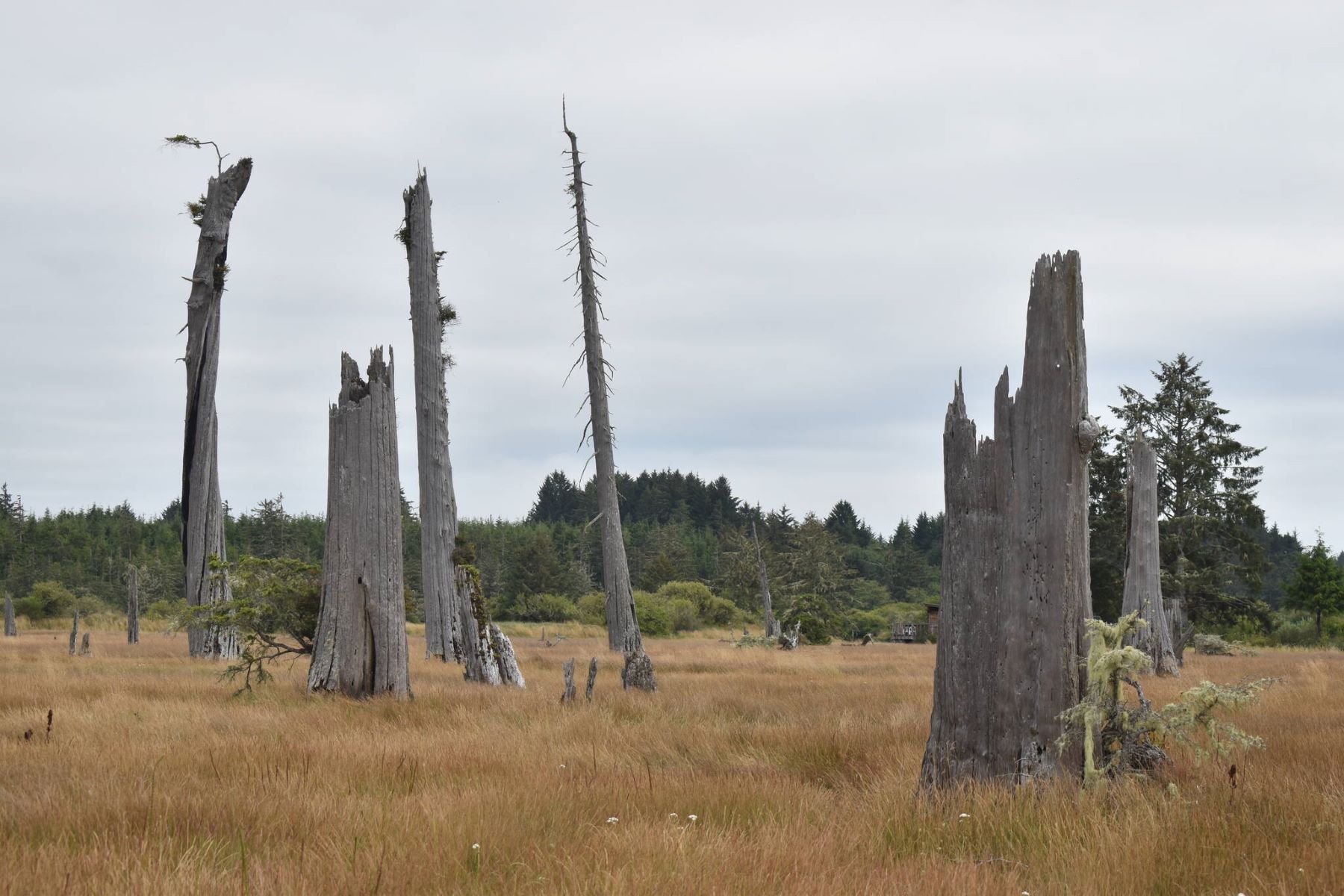Echoes Of Earthquakes: Hidden Ghost Forests Of Cascadia

Have you ever heard of ghost forests? These eerie landscapes tell a story of ancient earthquakes and tsunamis. Found along the Cascadia coastline, ghost forests are made up of dead trees that were once thriving. Around 300 years ago, a massive earthquake struck the region, causing the land to sink and seawater to flood the forests. This sudden change killed the trees, leaving behind haunting reminders of nature's power. Today, these ghost forests offer clues about past seismic events and help scientists predict future ones. Ready to learn more about these natural time capsules? Let's dive into the mysteries of Cascadia's ghost forests.
Echoes of Earthquakes: Hidden Ghost Forests of Cascadia
The Pacific Northwest holds secrets beneath its lush forests and rugged coastline. One of the most intriguing mysteries lies in the ghost forests of Cascadia. These eerie landscapes tell tales of ancient earthquakes and tsunamis that reshaped the region. Let's uncover some of these hidden ghost forests.
What Are Ghost Forests?
Ghost forests are areas where trees have died, often due to sudden environmental changes. In Cascadia, these changes were caused by massive earthquakes and tsunamis. The trees, now dead, stand as silent witnesses to these dramatic events.
Where to Find Ghost Forests in Cascadia
Copalis River, Washington
- Located along the Copalis River, this ghost forest is one of the most well-known in the region. The trees here died around 1700 due to a massive earthquake and subsequent tsunami. Their skeletal remains still stand, offering a haunting glimpse into the past.
Neskowin, Oregon
- Neskowin's ghost forest is visible during low tide. The stumps of ancient Sitka spruce trees, some over 2,000 years old, emerge from the sand. These trees were submerged by an earthquake and tsunami, creating a surreal landscape.
Willapa Bay, Washington
- Willapa Bay hosts another fascinating ghost forest. The trees here were killed by saltwater intrusion following a powerful earthquake. The stumps, preserved in the mud, provide a unique opportunity to study past seismic activity.
Netarts Bay, Oregon
- Netarts Bay features a ghost forest that dates back to a major earthquake in the 1700s. The stumps of ancient trees can be seen poking through the mudflats, especially during low tide. This site offers a stark reminder of the region's seismic history.
Yaquina Bay, Oregon
- At Yaquina Bay, the ghost forest is less visible but equally significant. The trees here were drowned by rising sea levels following an earthquake. Their remains, buried in the sediment, tell a story of sudden environmental change.
The Science Behind Ghost Forests
Scientists study ghost forests to understand past earthquakes and predict future ones. By examining tree rings and sediment layers, researchers can piece together the history of seismic events in Cascadia. This information is crucial for preparing for future natural disasters.
Visiting Ghost Forests: What to Expect
Visiting a ghost forest is like stepping back in time. The eerie, skeletal trees stand as a testament to nature's power. When planning a visit, check tide schedules, as many ghost forests are best seen during low tide. Wear sturdy shoes and be prepared for muddy conditions.
Why Ghost Forests Matter
Ghost forests are more than just eerie landscapes. They provide valuable insights into the region's seismic history. Understanding these ancient events helps scientists predict future earthquakes and tsunamis, potentially saving lives.
Preserving Ghost Forests for Future Generations
Preservation efforts are essential to maintain these natural archives. Protecting ghost forests ensures that future generations can learn from these silent witnesses to Cascadia's dramatic past. Conservation efforts include limiting human impact and conducting ongoing research.
Final Thoughts on Ghost Forests
The ghost forests of Cascadia offer a unique glimpse into the region's seismic history. These eerie landscapes remind us of nature's power and the importance of understanding our planet's past. Whether you're a scientist or a curious traveler, exploring these hidden forests is a journey worth taking.
Nature's Silent Witnesses
Ghost forests tell stories of ancient earthquakes. These eerie landscapes, with their dead trees and sunken roots, offer clues about the past. They remind us of the power of nature and the importance of understanding our planet's history. By studying these forests, scientists can predict future seismic events, helping communities prepare for potential disasters. Visiting a ghost forest is like stepping back in time. You can see firsthand the impact of natural forces. It's a humbling experience that connects us to the Earth's dynamic processes. Next time you explore the Pacific Northwest, consider visiting one of these hidden gems. You'll gain a deeper appreciation for the region's geological history and the resilience of nature. Ghost forests are more than just dead trees; they are nature's silent witnesses to the Earth's ever-changing landscape.

